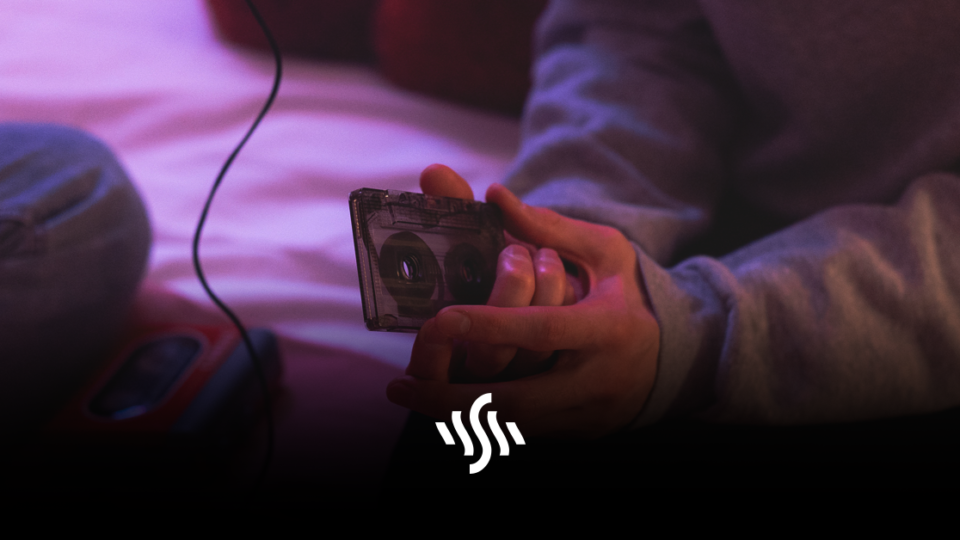What Is Lo-fi Music & Where Did It Come From?
This genre has become an internet phenomenon in recent years, going hand-in-hand with relaxing study. But, what is lo-fi music exactly?
We’re confidently going to assume that you’re already familiar with those animations of anime characters studying quietly at their desks. This has become such a stalwart of the genre that Lofi Girl even has its own Wikipedia page.
In terms of musical elements, lo-fi music can be characterised by its downtempo beats and warming vinyl crackle. You can also commonly hear tape hiss interjected with vocal samples, often taken from movies or self-help audiobooks. But, whilst this music seems contemporary and trendy, its origins can actually be traced back to the 1980s.
Origins of Lo-fi
Let’s first look at what lo-fi, as a term, actually means. It is the opposite of hi-fi (hi-fidelity). Low-fi as a musical label has shifted as music technology has advanced. The expectation of listeners has changed over the decades, with the possibilities relating to hi-fi increasing. The term lo-fi can even be traced back as far as the 1950s (then spelled low-fi).
One definition given to lo-fi music was “an unfavourable signal-to-noise ratio”, as penned by music educator R.Murray Schafer in the 1970s.
As for the popularisation of lo-fi music as we know it, it’s largely accepted that we have DJ William Berger to thank. Berger’s WFMU radio show took lo-fi from being hi-fi’s lexicographical counterpart, to having its own spirit.
Lo-fi music can be connected to cassette culture of the 1980s, punk and outsider culture, slacker/Generation X, and the DIY ethos.
Not Just Beats
Nowadays, lo-fi music is quickly associated with hip-hop, chill-hop, and relaxing beats. But, in its early stages, lo-fi was very punk rock.
Recording music in a bedroom or bathroom, rather than an expensive studio setting, resulted in lo-fi sounds. This was particularly common amongst rock and indie musicians. The idea of using whatever was available (often cheap equipment) became a movement in itself. The result of this was a kind of scruffy charm and rustic feel, that people eventually strived to recreate.
In the 90s, artists like Beck and Beat Happening became leaders in lo-fi rock music. In fact, Beck’s top 10 Billboard track, Loser served to show that giant record label handouts were unnecessary and unattainable.
Speaking to the New York Times, he explained, “Record budgets are out of hand; they give people like $300,000 to make a record. This is sick. Mine cost nothing.”
Today’s Lo-fi
With its relatively long history, you might be wondering, “what is lo-fi music today?”
These days, lo-fi is synonymous with relaxation and chill. This is because of the 2000s micro-genre “chillwave”. Taking its influences from 1980s pop, and centring its themes around nostalgia and memory, chillwave and lo-fo combined to create the comforting music we’re familiar with now.
The rise of DAWs and bedroom musicians meant more people aiming to emulate older artists, seeking out vintage sounds and equipment. Musical influences of jazz, hip-hop, and house can be picked out in modern lo-fi music.
Lo-fi for Videos
If you’re looking to add a lo-fi element to your video content, whether that YouTube videos or even a podcast intro (yes, we know that isn’t a video), check out Synchedin.
We add tracks to our huge library of royalty free music every single day. Discover independent artists from an array of genres and styles – but, if it’s lo-fi you’re looking for…
Royalty Free Lofi Music is the collection for you. Neatly packaged, you’ll find relaxing beats as well as deliciously fuzzy guitars. And the best part? All tracks have the sync license covered, meaning you can use them in your content without fear of copyright complaints.
To access unlimited downloads of the entire Synchedin catalogue, simply subscribe today from just $4.99!
